The vast expanse of our universe is a realm of wonder and mystery, and nestled within its celestial tapestry lies the Cygnus constellation, a constellation steeped in captivating beauty and enigmatic secrets. As we gaze upon the night sky, we are drawn in by the mesmerizing allure of Cygnus, its radiant stars sparkling like diamonds against the velvet backdrop. Join us on a journey through this ethereal realm, as we delve into the stunning stellar wonders, the enigmatic nebulae, the awe-inspiring black holes, and the intriguing galactic visitors that grace the Cygnus constellation. Prepare to be spellbound by a cosmic dance of brilliance!
Contents
- Overview of the Cygnus Constellation
- Stellar Beauty
- Mysterious Nebulae
- Astounding Black Holes
- Galactic Visitors
- Key Constellation for Astronomy
- Conclusion
-
Frequently Asked Questions
- 1. What does the name “Cygnus” mean?
- 2. How can I locate the Cygnus constellation in the night sky?
- 3. Are there any notable stars in the Cygnus constellation?
- 4. What are star clusters, and are there any in Cygnus?
- 5. What is a binary star system, and are there any in Cygnus?
- 6. What are nebulae, and what nebulae can be found in Cygnus?
- 7. Can you tell me more about the black holes in Cygnus?
- 8. Are there any intriguing galactic visitors in Cygnus?
- 9. How has the Cygnus constellation been used in navigation?
- 10. What role does Cygnus play in traditional astronomy?
- References
-
Frequently Asked Questions
- What is the Cygnus constellation?
- How can I locate the Cygnus constellation?
- What are the main stars in the Cygnus constellation?
- Are there any star clusters in the Cygnus constellation?
- What are binary star systems in the Cygnus constellation?
- What are the notable nebulae in the Cygnus constellation?
- What is Cygnus X-1?
- What is the Cygnus Dark Cloud?
- What is the significance of Cygnus in navigation?
- What does Cygnus symbolize in traditional astronomy?
- References
- Read More
Overview of the Cygnus Constellation
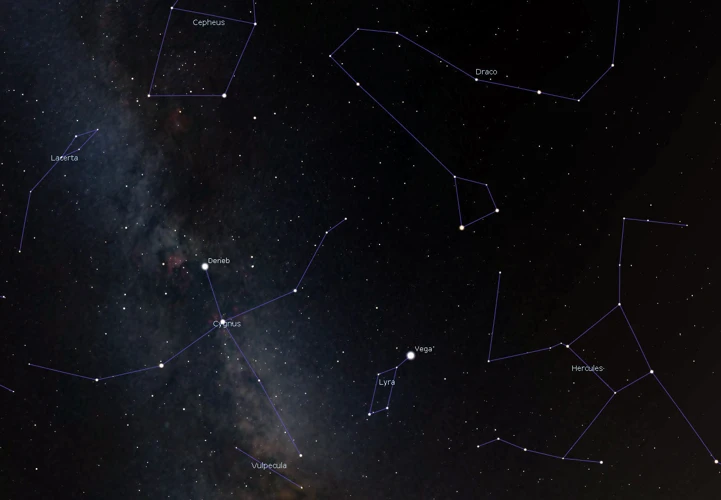
The Cygnus constellation, also known as the “Swan” or “Northern Cross,” is a celestial wonder that has captivated astronomers and stargazers alike for centuries. Located in the northern hemisphere, Cygnus is one of the most iconic and recognizable constellations in the night sky. Its distinctive shape resembles a flying swan, with its outstretched wings spanning across the heavens. This constellation is best observed during the summer months, when it dominates the northern sky. Cygnus is brimming with celestial treasures, including multiple bright stars, fascinating star clusters, mesmerizing nebulae, and even enigmatic black holes. Its prominent position in the Milky Way makes it an ideal target for astronomers seeking to unravel the mysteries of our galaxy. Whether you are a novice stargazer or an experienced astronomer, exploring the wonders of the Cygnus constellation is an awe-inspiring journey that unveils the hidden secrets of the cosmos.
Stellar Beauty
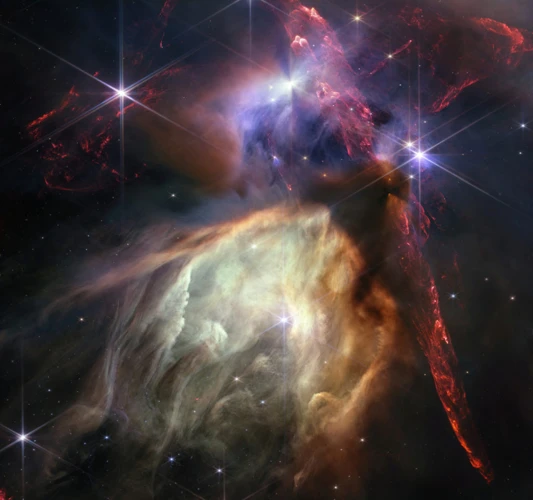
The Cygnus constellation enchants us with its stellar beauty, displaying a stellar ensemble that dazzles the night sky. Among its jewels is the breathtaking star Deneb, a luminous giant radiating a brilliant white light, situated at the tail of the celestial swan. Bright stars like Albireo and Sadr adorn Cygnus, their contrasting hues of blue and gold adding a touch of celestial artistry. These stars, along with many others, create a celestial choreography, guiding our eyes through the Northern Cross formation. Delving deeper into Cygnus, we encounter mesmerizing star clusters like the famous “The Horseshoe” cluster, an open cluster that captivates with its sparkling cluster members. In this constellation, we are treated to stunning binary star systems, where two stars pirouette in an eternal dance, eclipsing each other and captivating our imaginations. The stellar beauty of Cygnus is a celestial symphony that ignites our wonder and fuels our curiosity about the vastness of the universe.
The Brilliant Stars of Cygnus
At the heart of the Cygnus constellation lie some of the most luminous and breathtaking stars in the night sky. One standout is Deneb, a brilliant supergiant that marks the tail of the celestial swan. Deneb, derived from the Arabic word meaning “tail,” is one of the most distant and intrinsically luminous stars known to us. Its dazzling radiance illuminates the cosmic tapestry as one of the top twenty brightest stars in the night sky. Another notable star in Cygnus is Albireo, also known as “the beak.” Albireo, a multiple star system, exhibits a striking color contrast between its primary star, which appears golden, and the smaller companion star, which shines in hues of blue and green. This captivating visual double star leaves stargazers in awe. Cygnus is also home to other brilliant stars such as Sadr, Gienah, and Rukh, each adding their own celestial splendor to this majestic constellation. The brilliance of these stars serves as a constant reminder of the sheer magnitude and wonder of the universe we inhabit.
Exploring Star Clusters
Within the Cygnus constellation, lies a treasure trove of celestial wonders in the form of star clusters. Star clusters are groups of stars that are bound together by gravity, creating a breathtaking spectacle in the night sky. One of the notable star clusters in Cygnus is the aptly named “Cygnus OB2,” which is a massive and young cluster situated in the northern wing of the swan. This cluster is home to some of the hottest and most massive stars known to exist. Another fascinating star cluster in Cygnus is NGC 6910, also known as the “Rocking Horse Cluster.” This delightful cluster is located near the star Sadr, forming a captivating celestial dance with its glittering stars. Exploring these star clusters within the Cygnus constellation allows us to witness the birth and evolution of stars, gaining insights into the processes that shape our universe. Whether you’re an avid astronomer or simply captivated by the beauty of the night sky, venturing into the realm of star clusters in Cygnus is an exhilarating journey that unveils the mysteries of stellar formation and evolution.
Binary Star Systems
Binary star systems within the Cygnus constellation are a captivating aspect of its stellar beauty. These systems consist of two stars that orbit around a common center of mass, bound together by gravity. The Cygnus constellation is home to several remarkable binary star systems, each with its own unique characteristics. One notable example is Albireo, located in the constellation’s head, where a striking color contrast between its components is visible; one star shines with a golden hue, while the other radiates a vibrant blue. Another intriguing pair is Delta Cygni, situated at the base of the Northern Cross. This binary system consists of two blue-white stars that dance together in an intricate celestial ballet. The study of binary star systems provides astronomers with valuable insights into stellar evolution and dynamics, as well as the formation and evolutionary processes of stars. As we gaze up at the Cygnus constellation, we are reminded of the vast complexities of the universe and the interconnectedness of celestial bodies.
Mysterious Nebulae
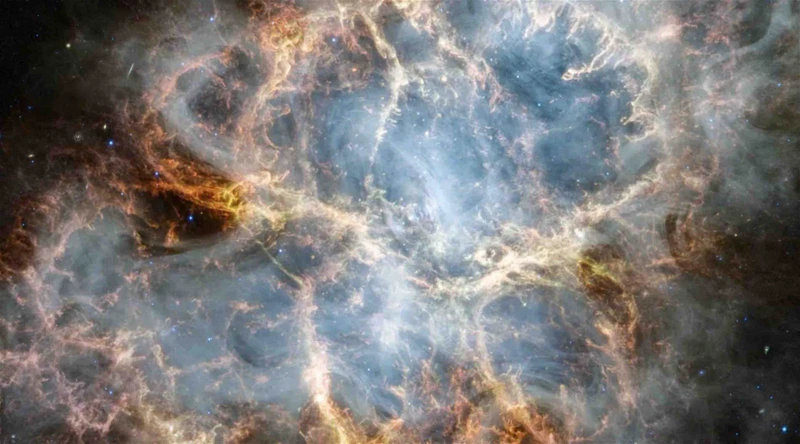
Nebulae, the ethereal clouds of gas and dust that grace the cosmic landscape, add an air of mystery to the Cygnus constellation. The celestial tapestry of Cygnus is adorned with several mesmerizing nebulae, each with its own unique story to tell. One such nebula is the North America Nebula, aptly named for its resemblance to the continent. Stretching across vast distances, this intricate cloud of gas and dust is a stellar nursery, giving birth to new stars. Another captivating sight within Cygnus is the Cygnus Loop, an expansive and intricate supernova remnant. Formed from the explosive death of a massive star, the Cygnus Loop showcases the remnants of the star’s outer layers, creating a dazzling display of cosmic debris. Additionally, the Veil Nebula, a delicate and intricate network of filaments, emanates an otherworldly beauty and intrigue. These nebulae, each with its own cosmic tale, bring an enchanting element to the celestial wonders of the Cygnus constellation, inviting us to ponder the mysteries of the universe.
The North America Nebula
At the heart of the Cygnus constellation lies a celestial masterpiece known as the North America Nebula. Resembling the shape of the continent for which it is named, this stunning emission nebula is a sight to behold. Located approximately 1,600 light-years away from Earth, the North America Nebula spans an area of sky equivalent to four full moons. Its vibrant hues of red and pink are created by ionized hydrogen gas, which is energized by the intense radiation from nearby young stars. These young stars also illuminate the intricate network of dust clouds within the nebula, adding to its intricate beauty. The North America Nebula is a favorite target for astrophotographers, who capture its ethereal splendor in all its glory. Its sheer size and striking resemblance to a familiar earthly shape make it a remarkable object to observe and appreciate. Immerse yourself in the cosmic grandeur of the North America Nebula, and allow its captivating beauty to transport you to the wonders of our vast universe.
The Cygnus Loop
The Cygnus Loop is a dazzling celestial phenomenon that lies within the Cygnus constellation. It is a massive supernova remnant, a testament to the explosive death of a massive star millions of years ago. This intricate structure spans across an area of the night sky approximately three times the size of the full moon. The Cygnus Loop is a prime example of stellar fireworks, as the remnants of the explosion continue to expand and evolve over time. This stellar explosion, known as a supernova, released immense energy and material into space. The shockwaves caused by the explosion created intricate filaments and arcs of glowing gas, which now grace the skies in vibrant hues of red, blue, and purple. The Cygnus Loop serves as a celestial time capsule, allowing astronomers to study the life cycle of massive stars and gain insight into the processes that shape the universe. Its stunning beauty and scientific value make the Cygnus Loop a must-see for any astronomy enthusiast.
The Veil Nebula
The Veil Nebula is a breathtaking celestial marvel nestled within the Cygnus constellation. Spanning across a vast expanse of space, this cosmic spectacle is the result of a massive supernova explosion that occurred thousands of years ago. Located approximately 1,470 light-years away from Earth, the Veil Nebula is composed of several intricate filaments of glowing gas and dust, which create a tapestry of vibrant colors against the backdrop of the night sky. These delicate wisps of matter were once part of a massive star that met its fiery demise. The Veil Nebula is divided into three main sections: the Eastern Veil, Western Veil, and the Bridal Veil, each displaying its unique array of intricate patterns and celestial beauty. This ethereal phenomenon serves as a constant reminder of the immense power and creative forces at play within our universe. Observing the Veil Nebula through a telescope allows us to witness the remnants of a cataclysmic event and unravel the secrets of stellar evolution. It is a captivating sight that both amateur and professional astronomers alike find awe-inspiring and humbling. So, set your sights on the intricate cosmic embroidery of the Veil Nebula, and allow its enchanting beauty to transport you to the far reaches of our universe.
Astounding Black Holes
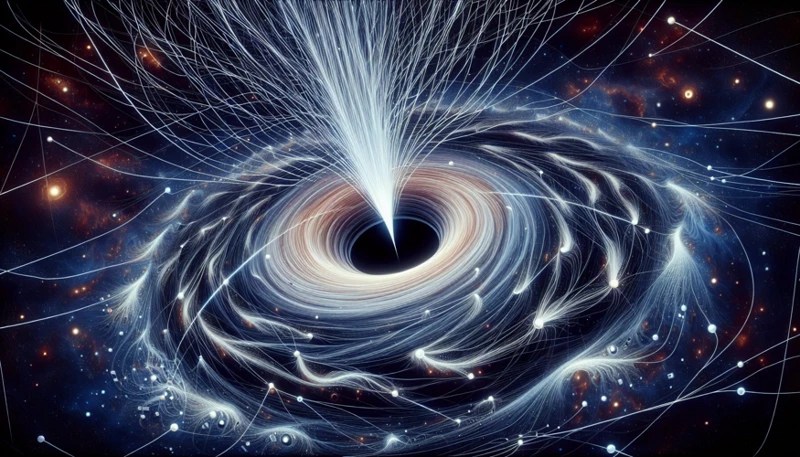
Within the depths of the Cygnus constellation lie some of the most astounding black holes in the universe, captivating celestial objects that continue to intrigue and baffle scientists. One such black hole is Cygnus X-1, a stellar black hole. This cosmic enigma, located approximately 6,000 light-years away from Earth, is formed from the remnants of a massive star that collapsed under its own gravitational pull. Cygnus X-1’s powerful gravitational force is so immense, it prevents even light from escaping its grasp. Another remarkable black hole in Cygnus is the supermassive black hole residing at the heart of the galaxy Cygnus A. With a mass billions of times greater than that of our sun, this colossal black hole exerts a gravitational influence that shapes the surrounding galaxy. These astonishing black holes within the Cygnus constellation offer a glimpse into the mysterious and captivating nature of these cosmic phenomena, providing valuable insights into the workings of the universe.
Cygnus X-1: A Stellar Black Hole
Cygnus X-1 is a fascinating and intriguing celestial object within the Cygnus constellation, representing a stellar black hole located approximately 6,070 light-years away from Earth. Discovered in 1964, it became one of the first confirmed black holes in the universe. This enigmatic system consists of a massive blue supergiant star orbiting around an invisible companion, which is the black hole itself. The gravitational pull of the black hole draws material from the blue supergiant, forming an accretion disk around it. The intense gravitational forces generated by Cygnus X-1 cause the material in the accretion disk to heat up and emit high-energy X-ray radiation, making it detectable from Earth. Studies of Cygnus X-1 have provided valuable insights into the nature of black holes and their formation. It remains a captivating subject of research and observation for astronomers, as they strive to unlock the secrets of these profound cosmic mysteries. /science-asteroid-classification/
Supermassive Black Hole at the Heart of Cygnus A
At the heart of the Cygnus A galaxy, lies a cosmic powerhouse that defies imagination – a supermassive black hole. This colossal celestial entity, known as Cygnus A*, holds an incredible mass of millions, if not billions, of times that of our sun. It exerts a gravitational pull so strong that nothing, not even light, can escape its grasp once it crosses the event horizon. The existence of a supermassive black hole at the core of Cygnus A was first discovered through observations of powerful radio emissions emanating from the galaxy. These emissions are the result of matter being torn apart and heated to extreme temperatures as it is sucked into the black hole’s voracious maw. The energy released during this chaotic process is billions of times more powerful than the combined energy output of all the stars in the Milky Way. Studying the behavior and characteristics of supermassive black holes, such as Cygnus A*, deepens our understanding of the fundamental forces that shape our universe. Scientists continue to investigate and unravel the mysteries of these enigmatic cosmic entities, pushing the boundaries of astrophysics and expanding our knowledge of the cosmos.
Galactic Visitors
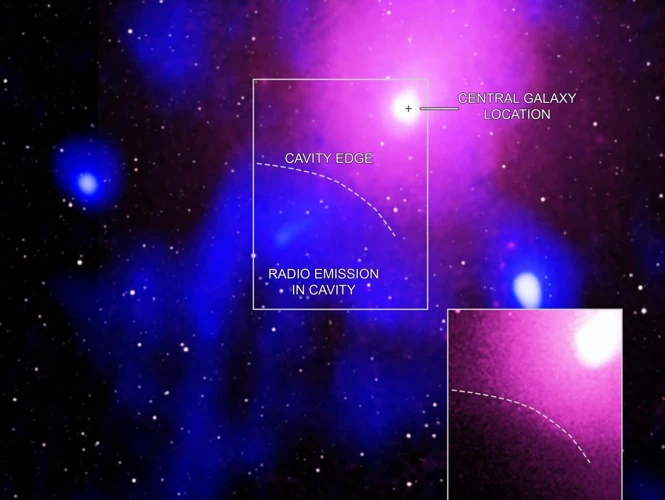
Within the vast expanse of the Cygnus constellation, there are some extraordinary galactic visitors that command our attention. One such visitor is the Cygnus Dark Cloud, a dense region of interstellar dust and gas that veils the background stars and gives rise to the formation of new stars. This massive cloud serves as a cosmic nursery, nurturing the birth of countless stellar objects. Another intriguing visitor that passed through Cygnus is a celestial wanderer known as ʻOumuamua. This interstellar object, which originated from outside our solar system, captured the imagination of scientists and sparked a flurry of speculation about its origin and nature. As it ventured through the Cygnus constellation, ʻOumuamua provided a glimpse into the vastness of our universe and the possibilities of interstellar travel. Both the Cygnus Dark Cloud and the enigmatic journey of ʻOumuamua remind us that the cosmos is a dynamic and ever-evolving realm, with countless mysteries waiting to be unraveled.
The Cygnus Dark Cloud
The Cygnus Dark Cloud is a mysterious and intriguing phenomenon nestled within the depths of the Cygnus constellation. This dark cloud, also known as the “Cygnus Rift,” is a vast and dense region of interstellar dust and gas that obscures the light from stars behind it. Spanning across a significant portion of Cygnus, this enigmatic cloud creates a stark contrast against the backdrop of the sparkling stars, giving the impression of a celestial river winding through the night sky. The Cygnus Dark Cloud is of great interest to astronomers and astrophysicists, as it serves as a stellar nursery, giving birth to new stars and planetary systems. Within its depths, hidden from our view, lie countless protostars in various stages of formation, waiting to emerge and illuminate the cosmic stage. The Cygnus Dark Cloud presents an opportunity for scientists to study the processes of star formation, offering insights into the birth and evolution of celestial bodies. Exploring this celestial phenomenon not only deepens our understanding of the cosmos but also sparks a sense of curiosity and wonder within us, as we witness the hidden beauty that resides within the dark recesses of space.
Interstellar Object ʻOumuamua’s Journey through Cygnus
Interstellar Object ʻOumuamua, a mysterious visitor from another star system, embarked on its extraordinary journey through the Cygnus constellation, leaving astronomers and scientists intrigued by its enigmatic nature. Discovered in 2017, this elongated and cigar-shaped object swiftly captured the attention of the scientific community as it zipped through our solar system. As it ventured through Cygnus, ʻOumuamua provided a unique opportunity for astronomers to study an interstellar object up close, offering valuable insights into the formation and composition of objects from distant star systems. Its precise origins and purpose remain a subject of lively debate, with theories ranging from natural asteroid or comet to even more speculative notions of extraterrestrial technology. As ʻOumuamua continued its voyage through the cosmic expanse of Cygnus, astronomers eagerly followed its path, attempting to unravel the secrets it carried from the depths of interstellar space. This extraordinary encounter with ʻOumuamua serves as a poignant reminder of the vast and wondrous universe that lies beyond our celestial neighborhood.
Key Constellation for Astronomy
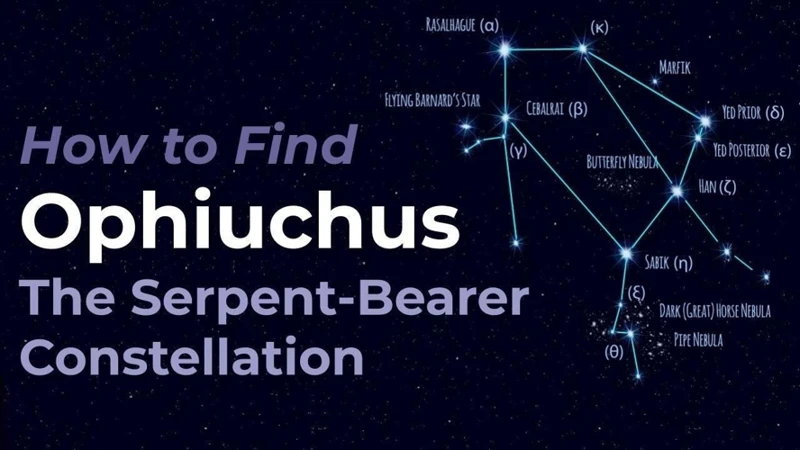
Cygnus is not only a celestial marvel but also a key constellation in the realm of astronomy. Its strategic position in the northern sky has made it an invaluable navigation aid throughout history. Sailors and explorers have relied on the Northern Cross to guide their journeys, its bright stars serving as reliable beacons in the night. Additionally, Cygnus holds significance in traditional astronomy, with ancient civilizations associating it with various myths and legends. In Egyptian mythology, the constellation was often linked to the story of Osiris and the “Book of the Dead,” symbolizing the journey of the soul in the afterlife. Cygnus has played a crucial role in modern astronomical research, serving as a key reference point for mapping and understanding the vast expanse of our universe. Its position within the Milky Way provides astronomers with insights into the structure and dynamics of our galaxy. Whether as a navigational guide, a symbol of ancient tales, or a tool for scientific exploration, Cygnus remains a key constellation that continues to inspire and fascinate astronomers to this day.
Cygnus, the magnificent constellation, has long served as a valuable navigation aid for sailors and explorers traversing the Earth’s oceans. The Northern Cross, a prominent asterism within Cygnus, consists of bright stars that form a distinctive cross shape. Sailors often used this celestial formation as a guide, aligning their course with the orientation of Cygnus to navigate across vast, uncharted waters. By observing the position of Cygnus in relation to other constellations or celestial landmarks, mariners could determine their bearing and ensure they stayed on course during their journeys. Even in modern times, with advanced navigation technology, Cygnus continues to inspire awe and serve as a reminder of humanity’s fascination with the night sky. Its navigational significance has earned Cygnus a revered place in the realm of traditional astronomy, connecting ancient seafarers to present-day explorers. So if you find yourself in the great outdoors or venturing on a nautical voyage, take a moment to gaze upon the celestial guidepost of Cygnus and appreciate its enduring role in aiding our navigation through the mysteries of the world.
Cygnus and Traditional Astronomy
Cygnus holds a significant place in traditional astronomy and has been revered by cultures around the world for centuries. In ancient Greek mythology, this constellation was associated with the story of Zeus disguised as a swan, known as the “Swan of Zeus.” In Egyptian mythology, the constellation represented the celestial counterpart of the god Osiris, and it was believed to guide the souls of the deceased to the afterlife. Cygnus has played a crucial role in celestial navigation throughout history. Sailors and explorers would use the stars of Cygnus as a guide to determine their position and navigate through uncharted territories. This makes Cygnus not only a celestial spectacle but also a practical tool for early seafarers. Today, with the advancement of technology and the accessibility of GPS, traditional methods of navigation have become less prominent. Nonetheless, the Cygnus constellation continues to hold its place as a timeless symbol of our connection to the stars and the rich history of human exploration. Its presence in the night sky reminds us of the enduring fascination and importance of traditional astronomy, allowing us to marvel at the wonders of our universe and the vastness of our place within it.
Conclusion

In conclusion, the Cygnus constellation stands as a testament to the grandeur and intrigue of our vast universe. From its brilliant stars to its captivating nebulae and enigmatic black holes, Cygnus offers a glimpse into the wonders of the cosmos. The exploration of this celestial realm not only deepens our understanding of the universe, but it also ignites a sense of curiosity and awe within us. As we gaze upon the radiant stars and delve into the mysteries of Cygnus, we are reminded of the limitless possibilities that lie beyond our earthly realm. Whether you are a seasoned astronomer or simply a lover of the night sky, the Cygnus constellation invites us to contemplate our place in the cosmic tapestry and to continue our quest for knowledge and exploration. So, venture forth into the celestial realm, follow the Northern Cross, and let the wonders of Cygnus inspire you to reach for the stars.
Frequently Asked Questions

1. What does the name “Cygnus” mean?
The name “Cygnus” originates from Greek mythology and it means “swan.” The constellation was associated with the story of Zeus, who transformed into a swan to seduce Leda, the queen of Sparta.
2. How can I locate the Cygnus constellation in the night sky?
The Cygnus constellation is easily recognizable due to its distinctive shape resembling a cross or a flying swan. During the summer months, look for the bright star Deneb, which marks the tail of the celestial swan.
3. Are there any notable stars in the Cygnus constellation?
Absolutely! Cygnus boasts several brilliant stars, including Deneb, the brightest star in the constellation. Other notable stars include Albireo, famous for its contrasting blue and gold colors, and Sadr, which forms the center of the Northern Cross.
4. What are star clusters, and are there any in Cygnus?
Star clusters are groups of stars that form together from the same molecular cloud. In Cygnus, you can find the dazzling open cluster known as the Dolidze-Dzimselejsvili 1 (DDO 1). It is a beautiful sight when observed through a telescope.
5. What is a binary star system, and are there any in Cygnus?
A binary star system consists of two stars orbiting around a common center of mass. Cygnus is rich in binary star systems, one of the most famous being Albireo, which is easily visible to the naked eye. Albireo consists of a blue and a gold star.
6. What are nebulae, and what nebulae can be found in Cygnus?
Nebulae are vast clouds of dust, gas, and plasma in space. In Cygnus, there are several stunning nebulae. The notable ones include the North America Nebula, which resembles the shape of the North American continent, the Cygnus Loop, a supernova remnant, and the Veil Nebula, which is a beautiful filamentary structure.
7. Can you tell me more about the black holes in Cygnus?
Cygnus is home to two remarkable black holes. Cygnus X-1 is a stellar black hole located in a binary system, while Cygnus A is a supermassive black hole at the heart of a distant galaxy. These black holes have intrigued astronomers for decades and continue to be the subject of intense study.
8. Are there any intriguing galactic visitors in Cygnus?
Absolutely! The Cygnus Dark Cloud is a vast and dense region of interstellar dust that obscures the light from stars and galaxies behind it. Additionally, the interstellar object ʻOumuamua passed through the Cygnus constellation during its journey through our solar system, leaving scientists in awe of its mysterious origins.
Cygnus has been used by navigators for centuries as a reliable indicator of direction. The long axis of the Northern Cross points almost directly towards the north celestial pole, aiding sailors and travelers in finding their way.
10. What role does Cygnus play in traditional astronomy?
Cygnus holds a significant place in traditional astronomy and mythology. It has been associated with various stories and legends throughout different cultures, often representing a swan or related celestial beings. Its prominence in the night sky has made it a beloved constellation among astronomers and stargazers.
References
Frequently Asked Questions

What is the Cygnus constellation?
The Cygnus constellation is a prominent constellation in the northern sky. It represents a swan in Greek mythology and is known for its distinctive shape.
How can I locate the Cygnus constellation?
The Cygnus constellation can be located using the bright star Deneb, which is part of the Summer Triangle. By finding Deneb, you can easily identify the shape of the swan in the sky.
What are the main stars in the Cygnus constellation?
The Cygnus constellation is home to several bright stars, including Deneb, Albireo, and Sadr. Deneb, in particular, is one of the brightest stars in the night sky.
Are there any star clusters in the Cygnus constellation?
Yes, the Cygnus constellation is home to several stunning star clusters. One of the most famous star clusters in Cygnus is the open cluster known as the Butterfly Cluster.
What are binary star systems in the Cygnus constellation?
Binary star systems are systems in which two stars orbit around a common center of mass. The Cygnus constellation is known for hosting numerous binary star systems, providing a fascinating sight for astronomers.
What are the notable nebulae in the Cygnus constellation?
There are several notable nebulae in the Cygnus constellation. Some of the most famous ones include the North America Nebula, the Cygnus Loop, and the Veil Nebula. These nebulae showcase the stunning beauty of cosmic gas and dust.
What is Cygnus X-1?
Cygnus X-1 is a famous stellar black hole located in the Cygnus constellation. It was the first-ever black hole to be discovered and is an intriguing object for researchers studying the nature of these cosmic phenomena.
What is the Cygnus Dark Cloud?
The Cygnus Dark Cloud is a large and dense molecular cloud located within the Cygnus constellation. It is a region rich in interstellar gas and dust, making it an excellent target for studying the process of star formation.
Cygnus has long served as a navigation aid for sailors and travelers. Its distinctive shape and bright stars have been used to navigate and orient oneself in the night sky, especially during ancient times when advanced navigation technology was not available.
What does Cygnus symbolize in traditional astronomy?
In traditional astronomy and mythology, Cygnus is often associated with the mythical swan. It has been depicted as a symbol of grace, beauty, and transformation, showcasing the human fascination with the celestial wonders of the night sky.







